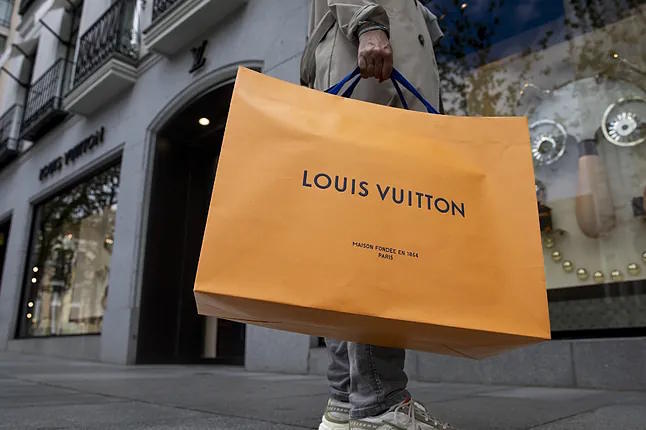Luxury is the big winner of the recent rapprochement that took place over the weekend in Switzerland, a haven for Europe's wealthiest individuals. The talks between the US Administration and the Chinese Government held in Geneva have borne fruit, and on Monday, it was announced a 90-day truce in the trade war initiated by Donald Trump between the two countries just over a month ago. The result of the negotiation is a reduction from 125% to 10% of the tariffs that the US will impose on Chinese products, while Beijing will reduce its tariffs on US imports from 145% to 30%.
On Monday, major European luxury companies are experiencing stock rebounds exceeding 7%, leading to a collective increase of 45 billion euros in market capitalization among the top ten firms in the Old Continent in a matter of hours, mainly driven by the revaluation of the fashion giant Louis Vuitton. The holding company, LVMH, has gained over 7% in the French market, adding nearly 20 billion in valuation, surpassing once again 266 billion euros. Other major companies such as Richemont, Dior, or Kering, the owner of brands like Gucci, are also seeing stock increases of over 7%. Companies like the British Burberry, Moncler, or Hermès are showing increases above 6%, with Hermès exceeding 4% in the market.
The temporary peace agreed upon between the world's two largest luxury consumers is positive for a sector that was going through tough times. The tariffs had added to the woes of the Chinese consumer, who was already feeling the effects of the strength of their currency, leading to a decline in luxury sales related to travel (which are significant for the sector), especially in Japan. While waiting to see the final tariffs between China and the US, Barclays analysts estimated that luxury companies would pass on at least 50% of the tariff increase to their products. On average, it was expected that the imposed tariffs would be around 10% for most companies, 8% for LVMH, slightly lower than its counterparts, and particularly penalizing those with higher sales in the US, such as Adidas and Puma, with tariffs of up to 21.5%, according to a recent report published by the British bank.
It is important to note that luxury brands operate with comfortable margins, reaching gross margins of up to 80% and EBITDA margins close to 40% in cases like LVMH or Hermès. In a scenario where these margins are well protected, Barclays predicted average price increases of around 4%-5%, which, in principle, does not affect traditional luxury consumers but could reduce occasional sales from those who approach the sector sporadically. As an example, their analysts detail the price increases implemented by Louis Vuitton across a wide range of products from April 1st to the 23rd. The price of their NeoNoe bag increased by 7% to $2,250; the Diane Satchel model by 6% to an average of $2,570; accessories like the Pochette by 5%; and a 1% increase in the most expensive models, such as the Dauphine MM, priced at nearly $4,000.
According to data published by Citi, credit card purchases in the US fell for the third consecutive month in April, down by another 6%. Analysts attribute part of this decline to the uncertainty affecting consumer sentiment regarding "possible economic slowdown, inflation, and household savings" in the US. By categories, spending has plummeted more in high-end leather products and jewelry sold in US stores.
